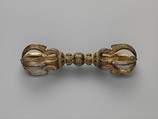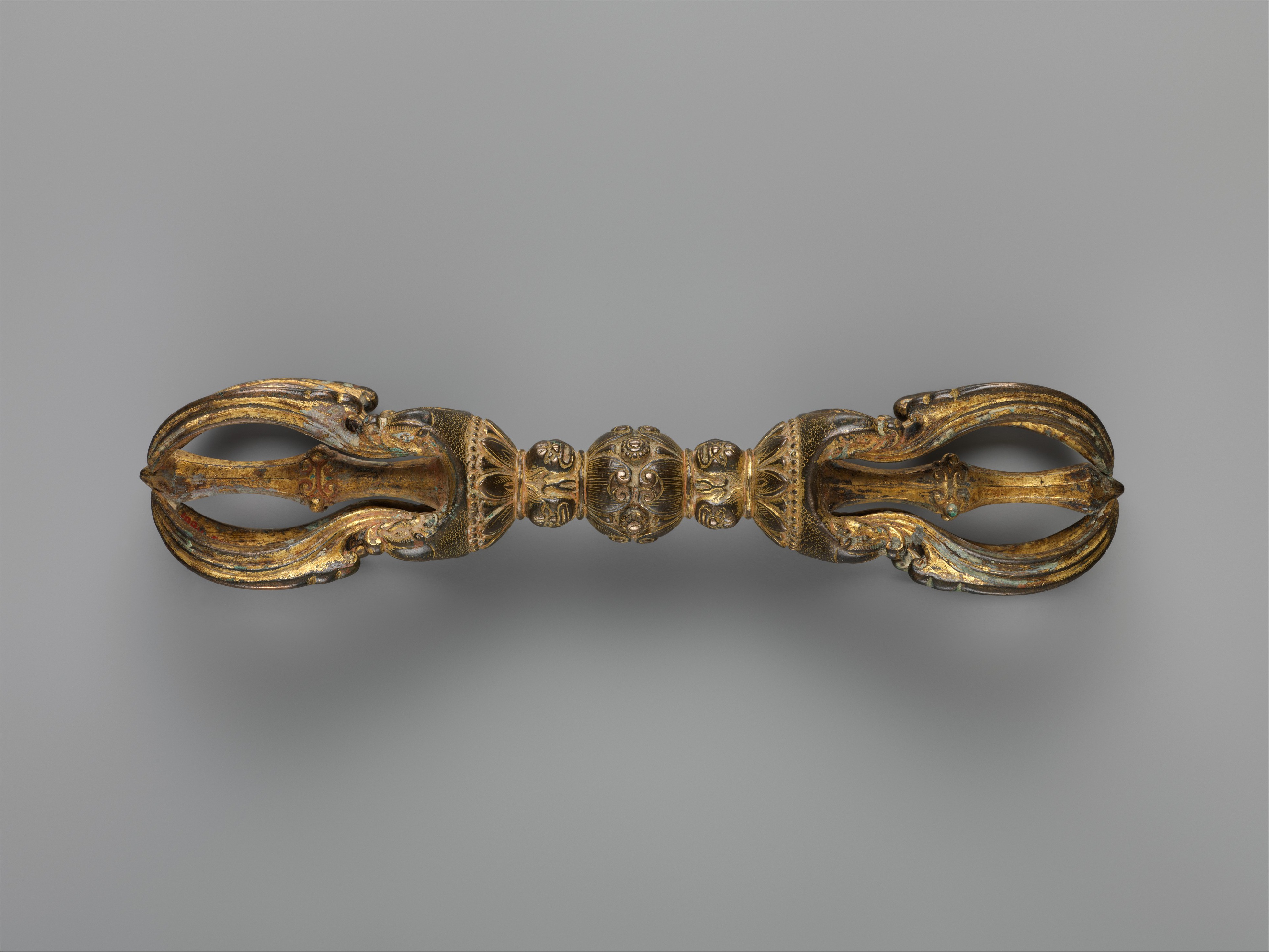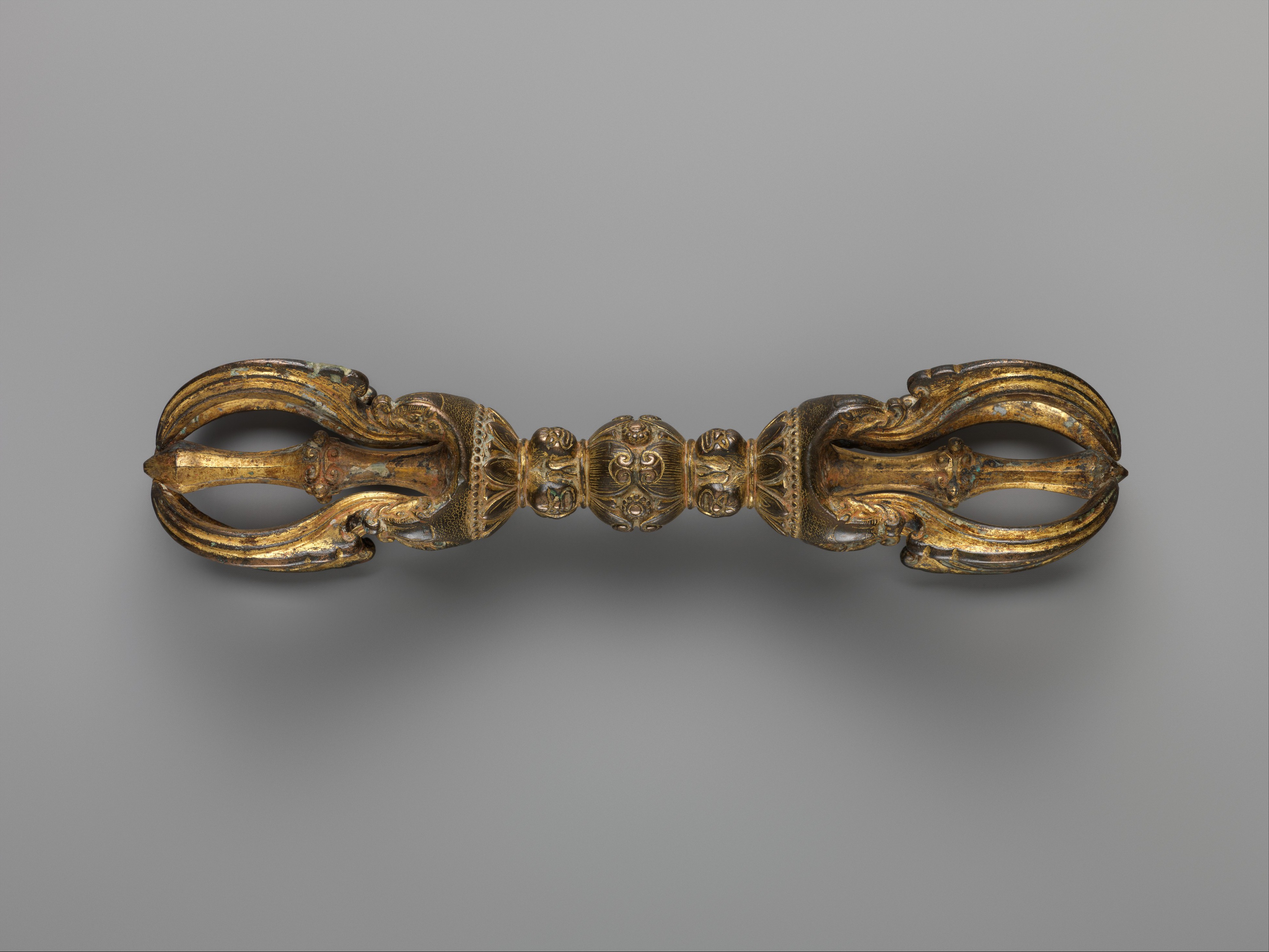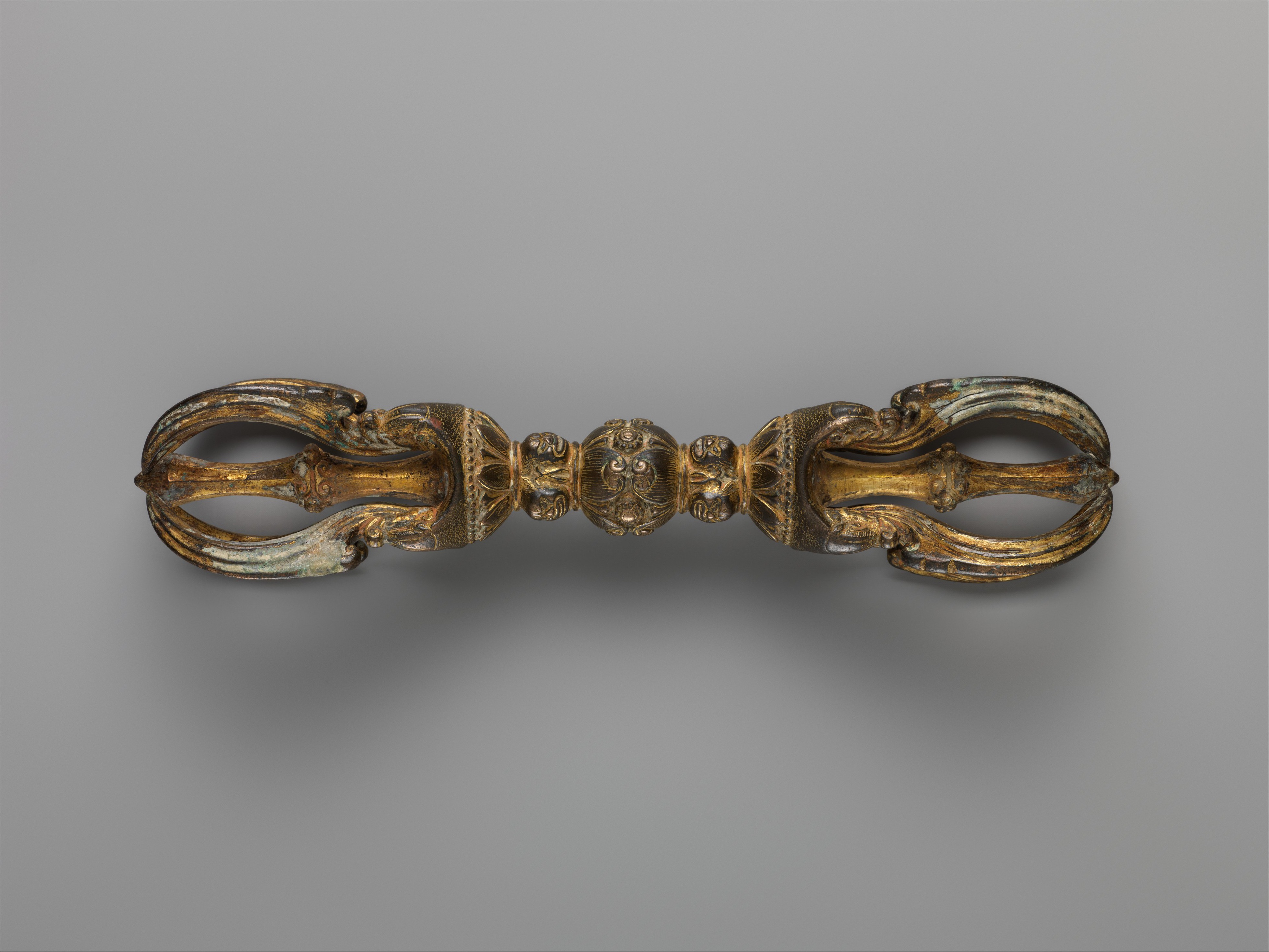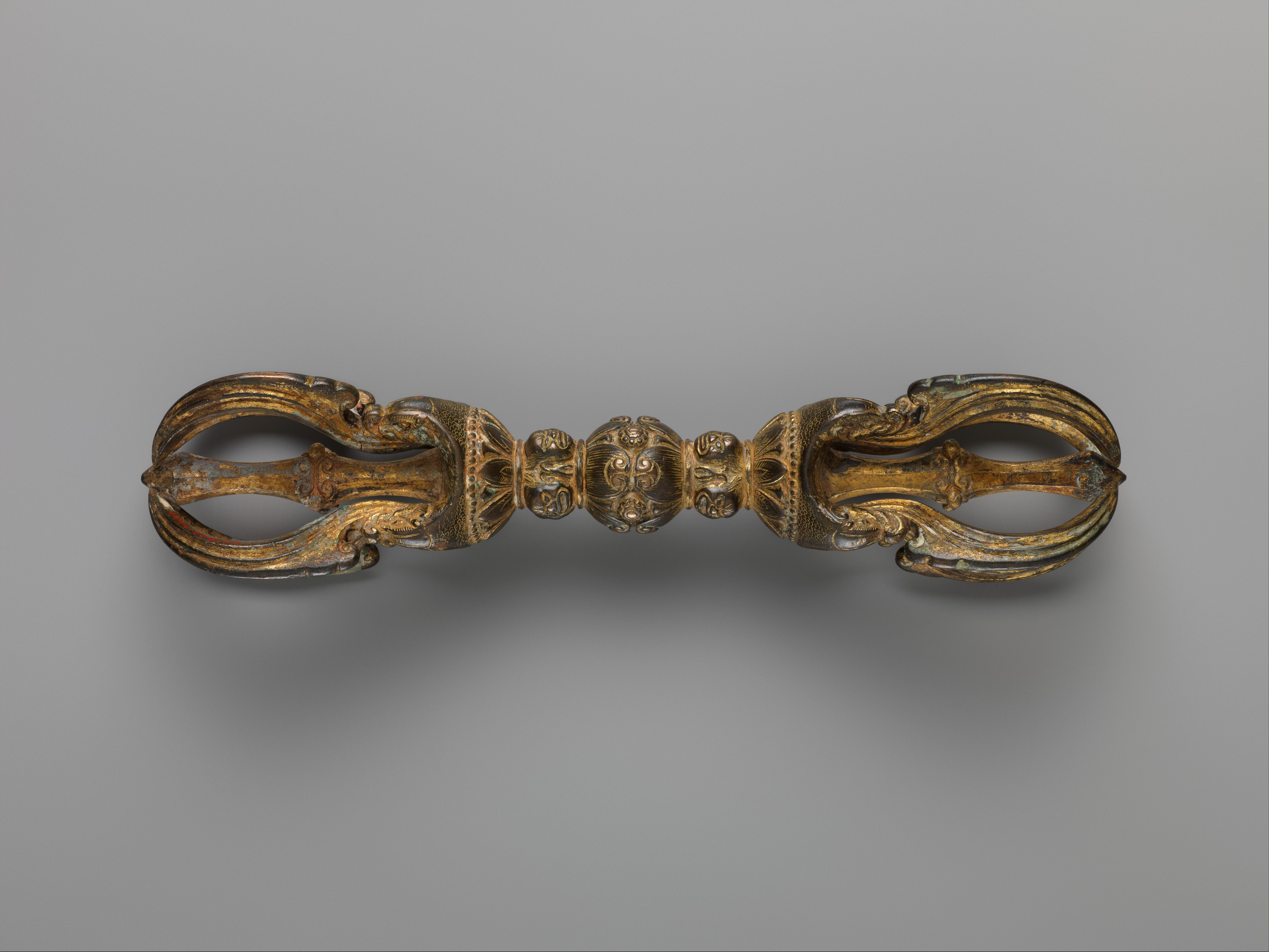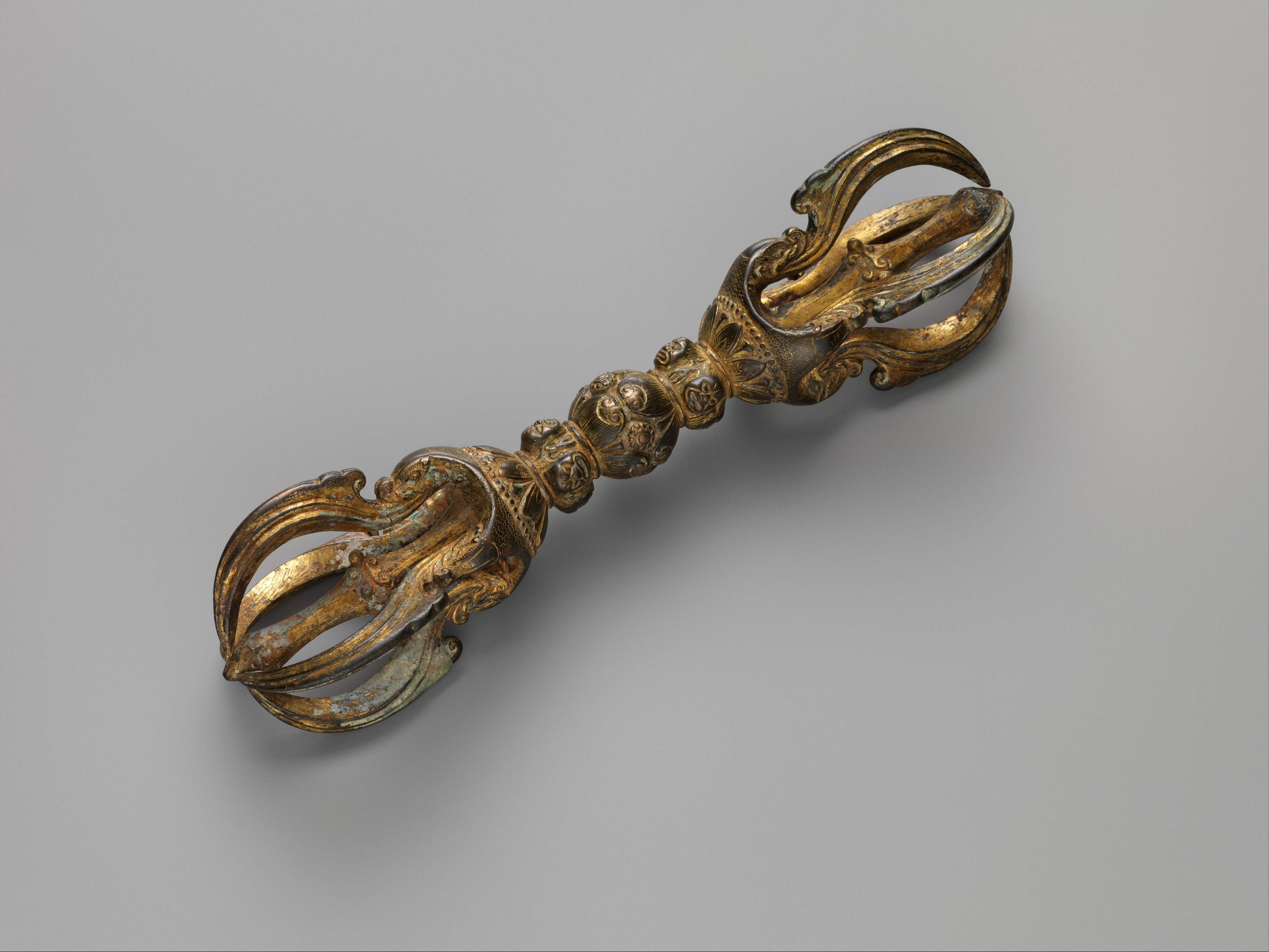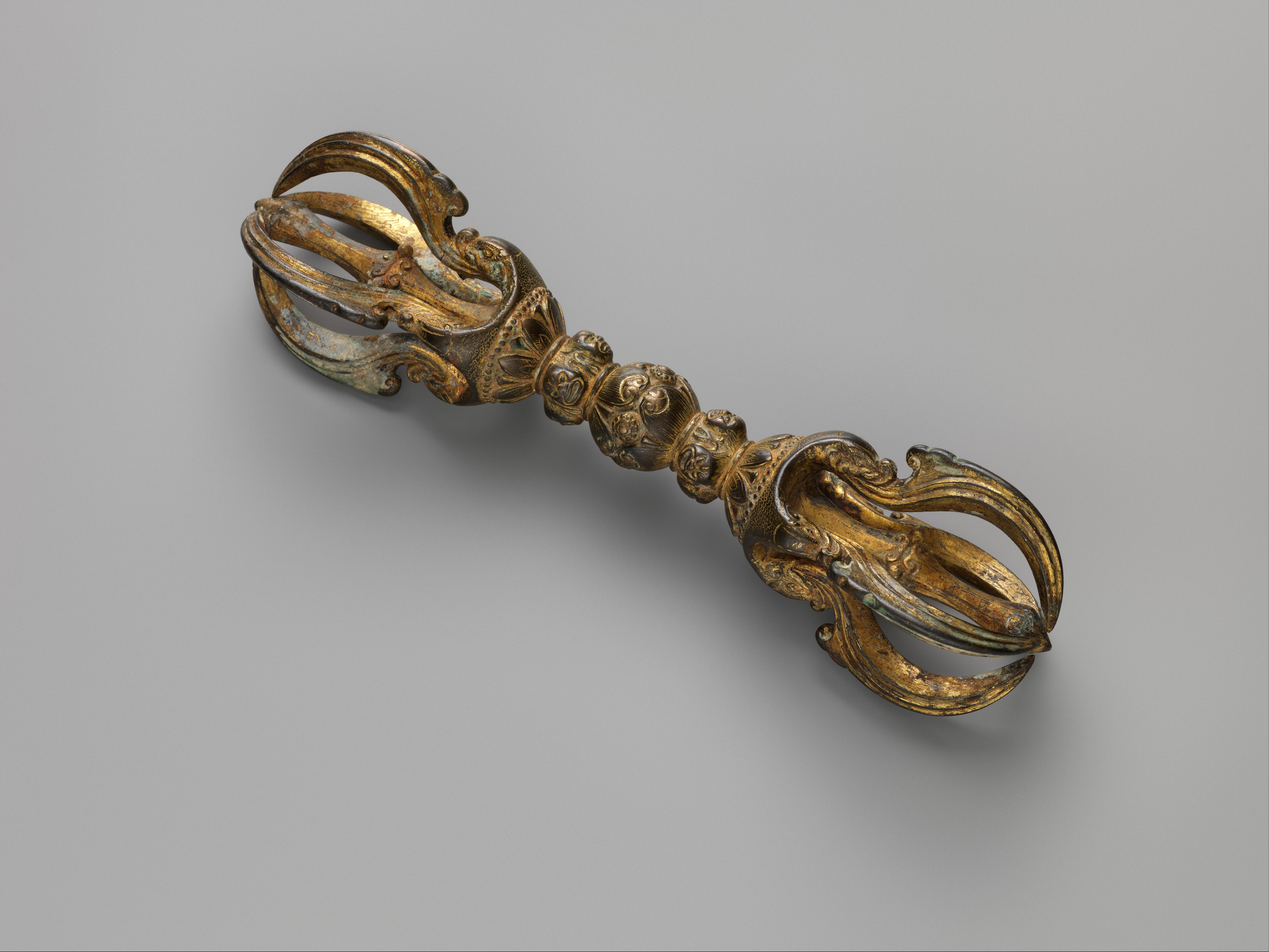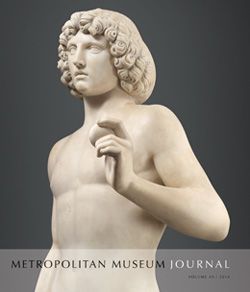Vajra with Angry Heads and Makara Prongs
Tang dynasty (618–907)
Not on view
This finely crafted vajra follows a well-established five-prong pattern marking the center and four directions. The central prong is surrounded by four foliate arched tines that emerge from the mouths of makaras (aquatic hybrid monsters), Indian motifs that legitimized this ritual tool. This vajra’s detailed lotus imagery and bands of angry heads hint at its tantric function. Using a vajra as a ritual instrument aligned the practitioner with a deity, symbolizing the diamond-like energy of enlightenment.
This image cannot be enlarged, viewed at full screen, or downloaded.
This artwork is meant to be viewed from right to left. Scroll left to view more.
